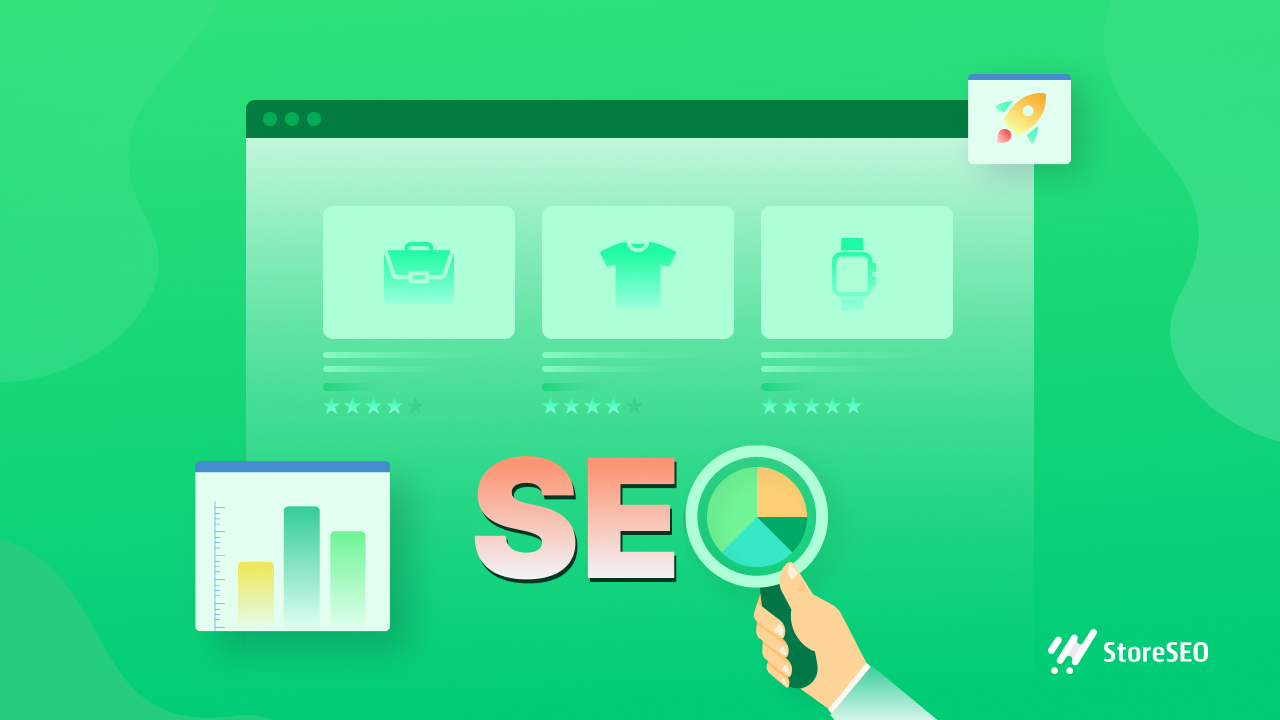Are you thinking about how to thrive in the fiercely competitive world of eCommerce amid skyrocketing spending? Do not fall for the common misconception that visitors primarily enter through the homepage or category pages. In reality, product pages attract significant organic traffic from ready-to-purchase visitors. And, neglecting the product page SEO in your SEO strategy means missing out on substantial opportunities.

In this blog, we will let you know 10 do’s and don’ts on product page SEO that can lead you towards a better sale. We recommend you read till the end so that you can learn how to do SEO for e-commerce product pages that boost performance and revenue.
Why Ecommerce Product Page SEO Is Important?
The significance of ecommerce product page SEO can not be overstated. As businesses increasingly shift their operations to online, the visibility and accessibility of products on the internet become pivotal factors in driving success. Here are some important points on why ecommerce product page SEO holds such paramount importance.

Enhanced Visibility & Traffic
Product page optimization for search engines ensures they are more likely to appear in relevant search results. This heightened visibility exposes your products to a larger audience, driving organic traffic to your ecommerce site.
Competitive Edge
In a saturated online marketplace, competition is always high & SEO for products is a must. Effective SEO strategies give your product pages a competitive edge by making them more attractive to search engines. This helps your offerings stand out amidst a bunch of similar products.
Increased Credibility & Trust
Users often associate top search engine rankings with credibility. When your product pages consistently appear in search results, it builds trust with potential customers. This trust can significantly influence their decision-making process when making a purchase.
Improved User Experience
Search engine algorithms consider user experience as a crucial factor in ranking. By optimizing the product page SEO, you can enhance the overall user experience. This includes factors such as page load speed, mobile responsiveness, and intuitive navigation.
Adaptation To Changing Consumer Behavior
As consumers increasingly turn to online channels for their shopping needs, SEO for ecommerce product pages becomes a strategic necessity. Adapting to changing consumer behavior ensures that your business remains relevant and accessible easily.
However, ecommerce product page SEO is not just a technicality but a fundamental aspect of online business success. By investing in effective SEO strategies, businesses can elevate their online presence, attract targeted traffic, and ultimately drive sustained growth in the competitive world of ecommerce.
Product Page SEO For Ecommerce: 10 Expert-Picked Do’s & Don’ts
To outpace the competition, elevate your online store’s visibility, and drive organic traffic you need to focus on the heartbeat of your online business – your product pages. While doing SEO for your product pages, you need to keep in mind a few do’s and don’ts. Let us dive in.
7 Do’s For Ecommerce Product Page SEO
For doing the best product page optimization, you need to keep in mind several points that are a must. Here is the most common and important do list for product page SEO below.
Refine Your Keyword Strategy
The cornerstone of product page SEO lies in keyword research. You need always focus on product-related topics that users actively search for. Make sure that you prioritize relevancy over volume for conversions.

Moreover, utilize data from channels like paid search for keyword and topic research. Integrate high click-through rate (CTR) ad copy into meta descriptions. Since product pages indicate transactional intent, ensure landing pages are geared for searchers poised to make a purchase.
For instance, someone searching for a specific product like ‘PHILIPS J60 electric toothbrush’ signals strong purchase intent due to the detailed nature of their search. So you need to streamline the process for them with detailed keywords so that users can take the next crucial step.
Optimize Titles & Meta Descriptions
For product page SEO, having the proper title tags and meta descriptions is a must. While writing these, you need to make sure you include the product’s brand with the proprietary brand, product’s name, model number, and other important information if have any (e.g., dimensions, size, materials, and so on).
Utilize High-quality Imagery & Video
It is a sad reality that shopping online has a downside – the inability to touch or test products. To overcome this, high-quality images and videos play a crucial role in providing customers with the confidence they need to make informed purchases.
In our quest for an electric toothbrush, we visited the Amazon website. This site holds a top ranking for the search term ‘electric toothbrush’, offering a product landing page rich in compelling content, with high-quality images, infographics, videos, and other important information that we need to know before purchasing.

Minimize Page Loading Times
You need to ensure that your product pages work well on mobile devices because many people use them for online searches. Quick-loading pages help your content reach your audience faster, improving the user experience. This can boost sales, revenue, and pages viewed per session, giving you a competitive advantage and reducing bounce rates. Aim for a loading time of three seconds or less.

Incorporate Clear & Helpful FAQs
To rank high on search engines, it is important to make really helpful content for users. If people don’t find your content useful, they might leave quickly, and you could lose potential customers.
Lots of category and product pages do not have good content and lack a simple FAQ section. Instead, they often use content made by users, which isn’t the best choice.
Imagine you have a question about a product and do not want to use a chatbot or call customer service. If a brand has a clear FAQ section with answers to common questions, you and others can easily find the information you need. This helps the brand sell more products.
Showcase Testimonials & Customer Reviews
Adding customer reviews to your product pages can boost conversions by a significant 52.2%. It is a smart move because genuine feedback speaks loudly to potential buyers. Letting customers share their experiences builds trust and shows how your products solve problems.
Plus, it is a bonus if a trusted celebrity or influencer endorses your products. Reviews also give Google the fresh content it likes. Just remember to use the review schema for proper markup.
Conduct Technical Audit Of Product Pages
Product pages can end up being copied due to faceted URLs, leading to SEO challenges like having the same content multiple times, wasting resources for crawling, and splitting link authority.

To prevent these issues, it is important to check your pages for potential improvements in both technical aspects and content with a proper SEO audit. Watch out for problems such as
- Repeating title tags and meta descriptions
- Slow page loading
- Broken links
- Not enough content
- Error pages (404)
- Redirects (302) and
- Missing structured data
By addressing these concerns you can help enhance the overall performance of your website.
3 Don’ts For Ecommerce Product Page SEO
The way you check a bunch of do lists for your product page SEO, likewise, there are certain things you need to uncheck as well. Though there are many, here we are going to let you know about the most vital and easy-to-do ones.
Don’t Delete Seasonal Pages After Peak Periods
Many brands make the common mistake of deleting seasonal pages after a busy time. This seems like a good idea, but it means they have to work hard every year to regain the authority needed to rank for seasonal terms.
Doing this every year often means it is too late to recover. If you have a seasonal product page that is doing well, it is better not to delete it.
Look at WPDeveloper—they have a dedicated Holiday Deals Page that keeps getting better over time. They update it every year when the Holiday is near like now.

Avoid Relying On Automated Optimization
Do not just use the product name and brand as the title on product pages – it is not the best way to do it. Avoid using automated descriptions that only make a few changes. This can hurt how many people click on your site.
Instead, put important details in the titles that can not be automated. This can make your site show up better when people search for specific words. Make sure each title and description is different from the others.
Don’t Put The Wrong Pricing
If you do not price your products right, people might not buy them, and they might not trust your brand. This is especially true when prices go way up for things that everyone needs, like during the baby food shortage.
We all understand supply and demand, but paying 25% more for baby formula is just not right. Luckily, some states are stopping companies from charging way too much.
Sharpen Your Product Page SEO Strategy & Brush Up Your Brand
While doing product page SEO for your ecommerce, make sure you are giving customers quick and complete info, good reasons to buy, answers to their questions, and real endorsements. This brings them back to your site. Building a brand takes time. Even if it does not make them buy right away, it tells customers they can trust you. So, keep a close eye on your SEO to build that trust.
To get more SEO tips & tricks for your ecommerce business, please subscribe to our blog (a treasure for SEO) & follow our friendly and helpful Facebook community.









